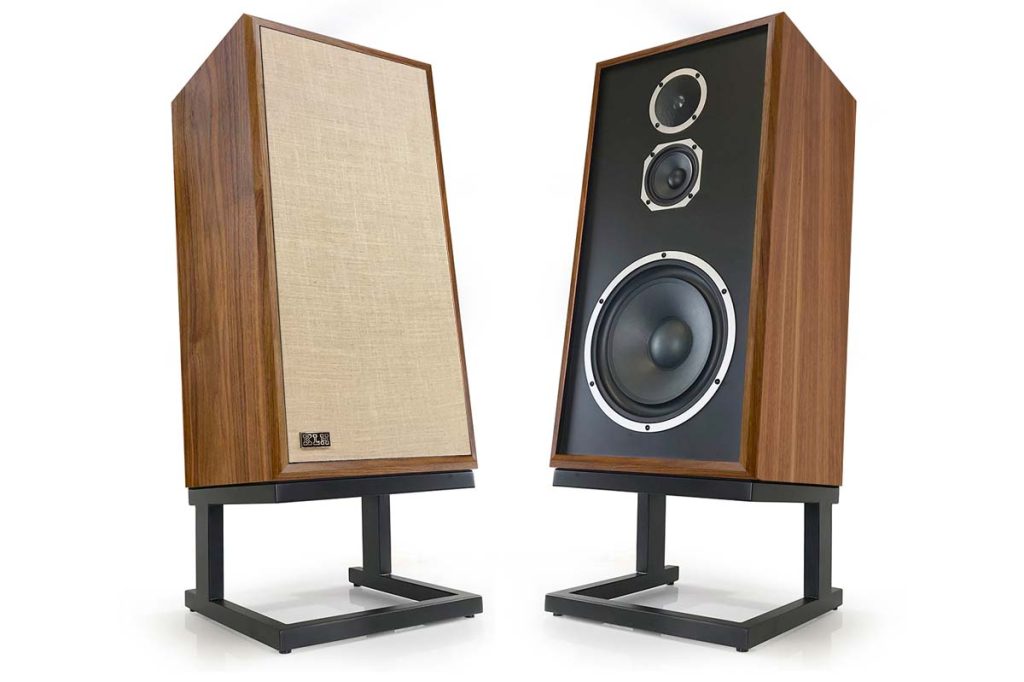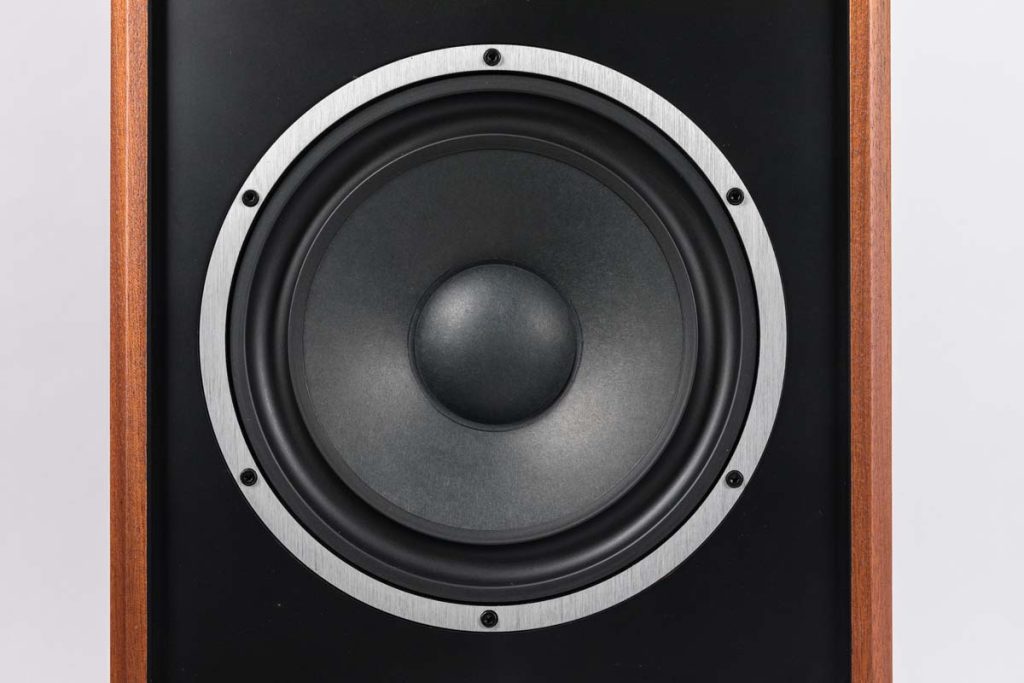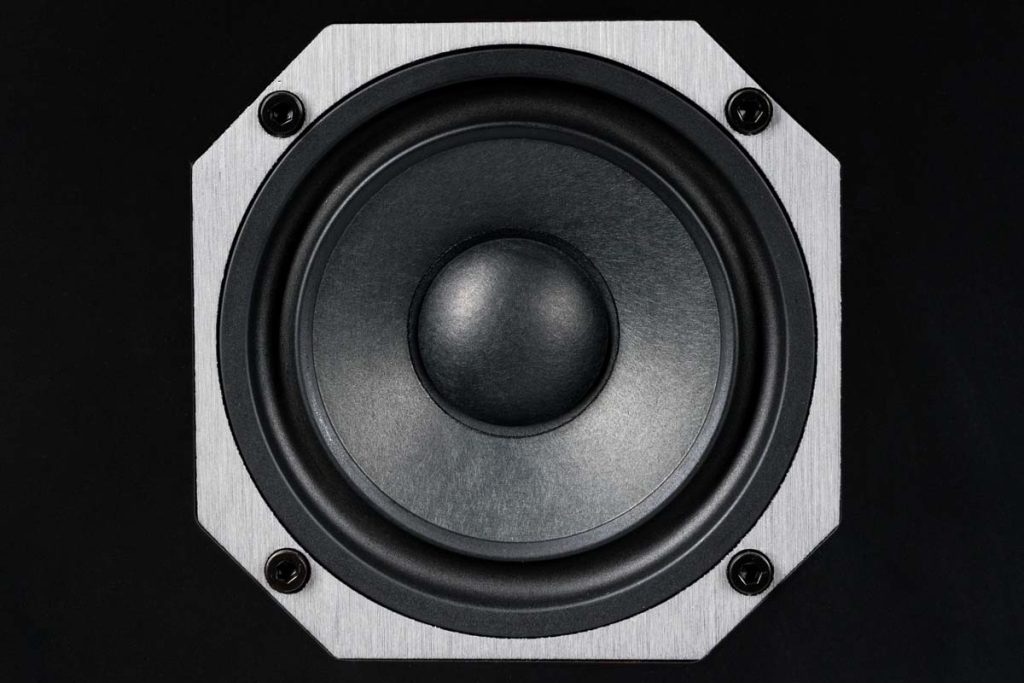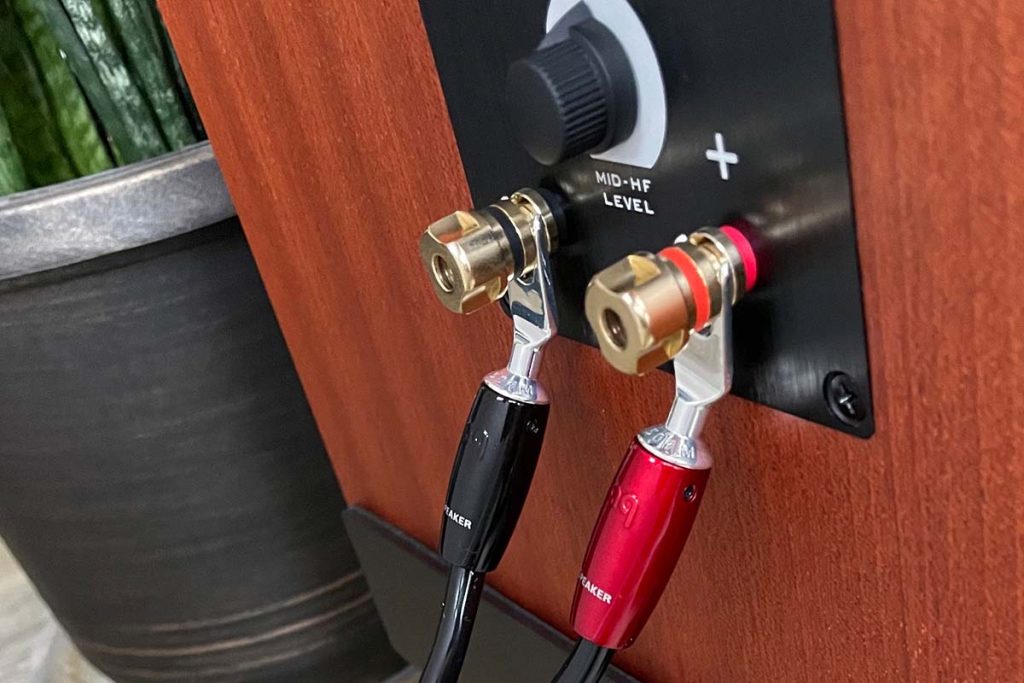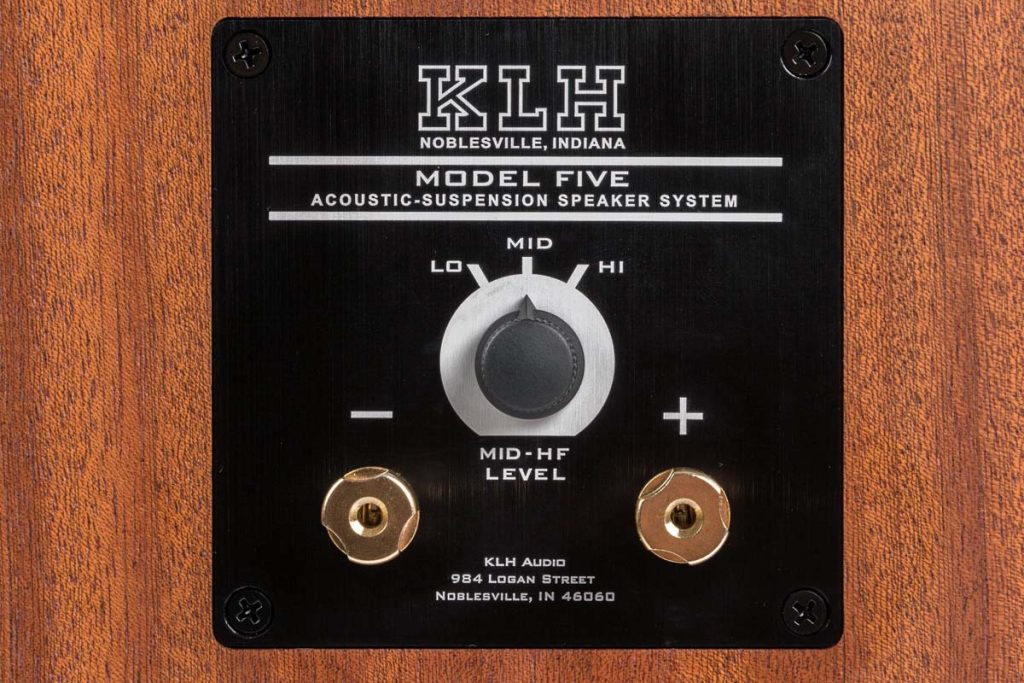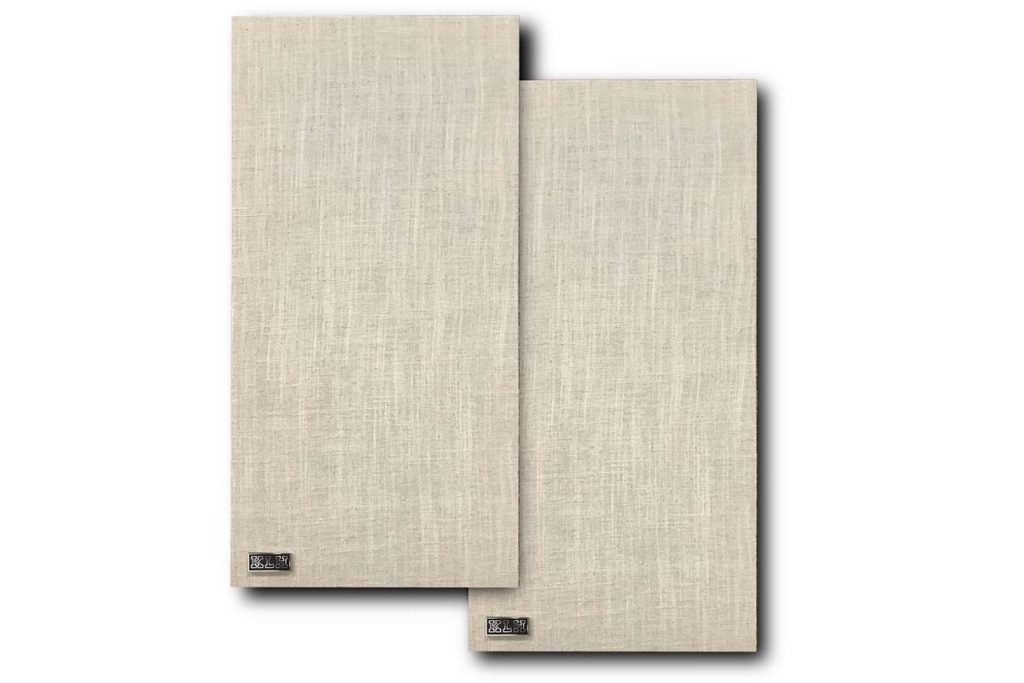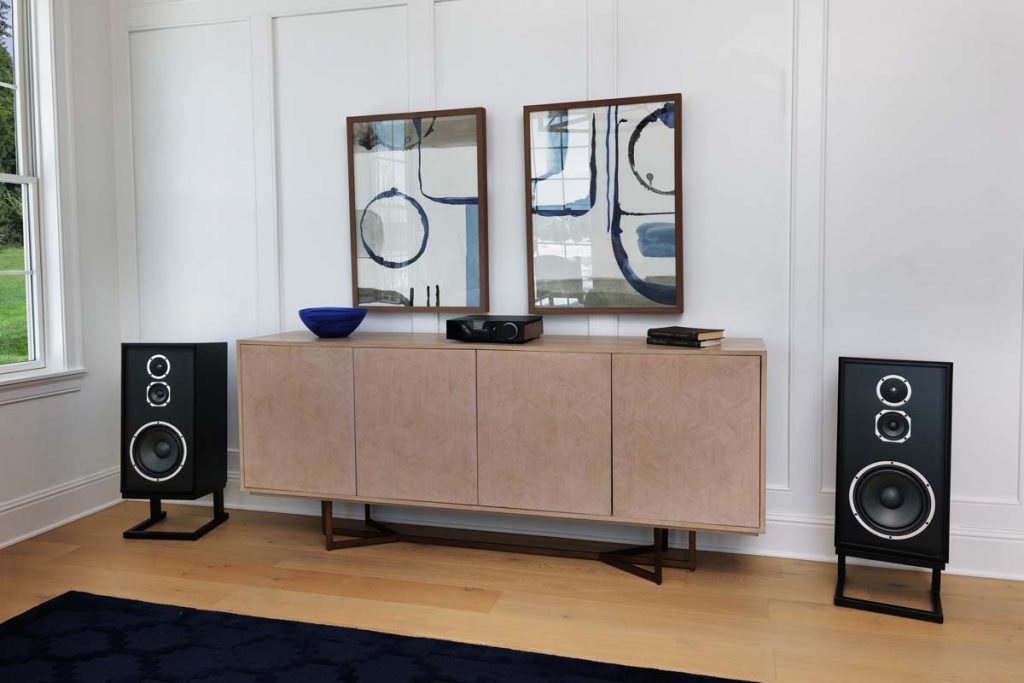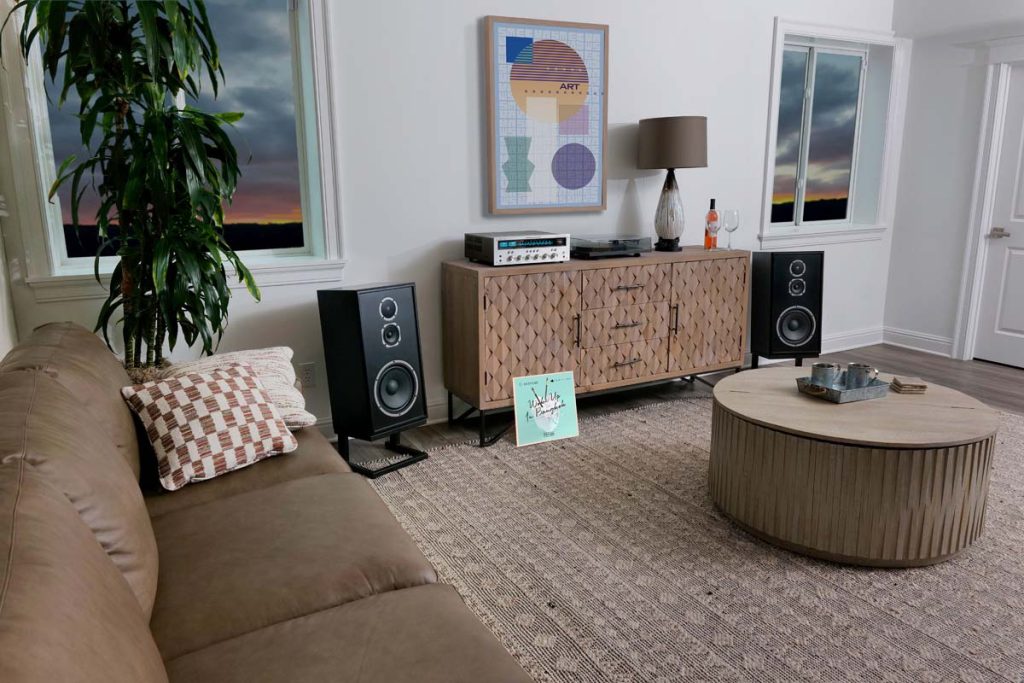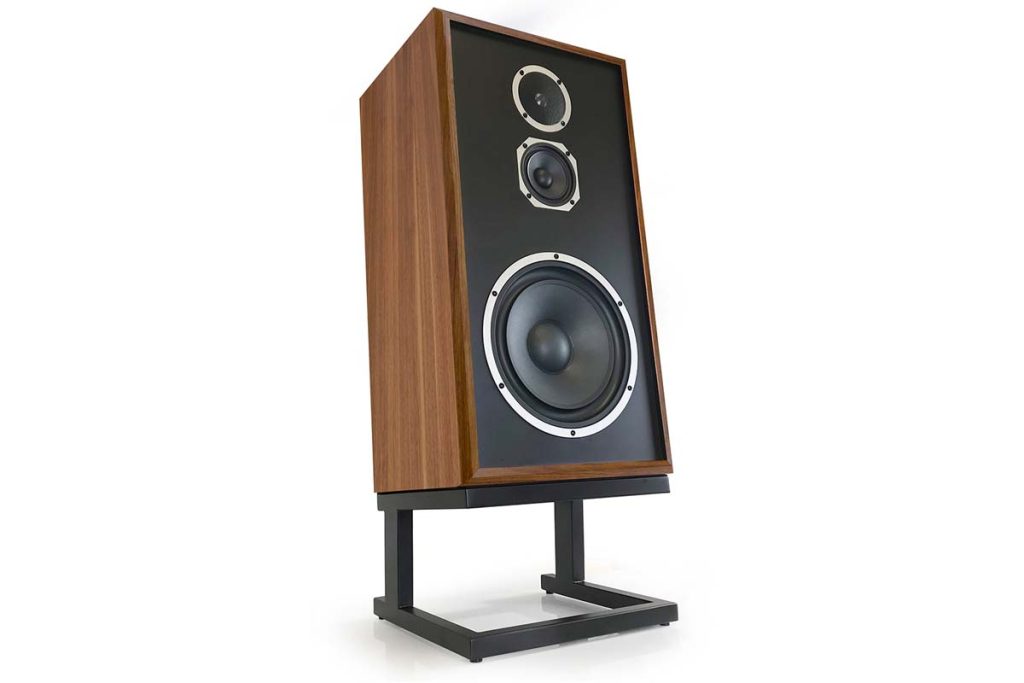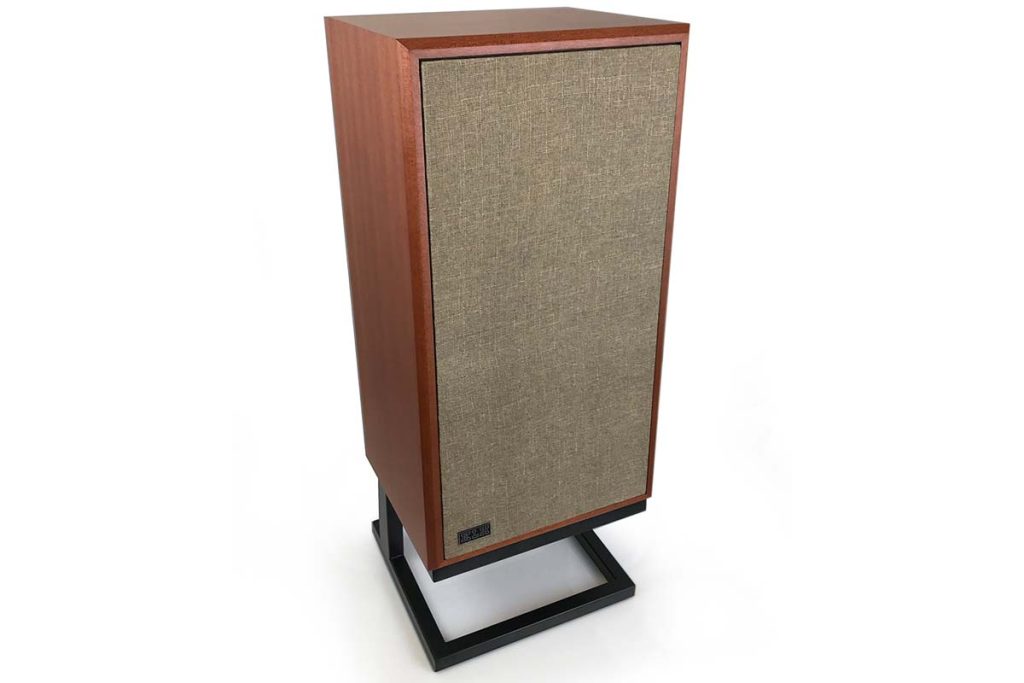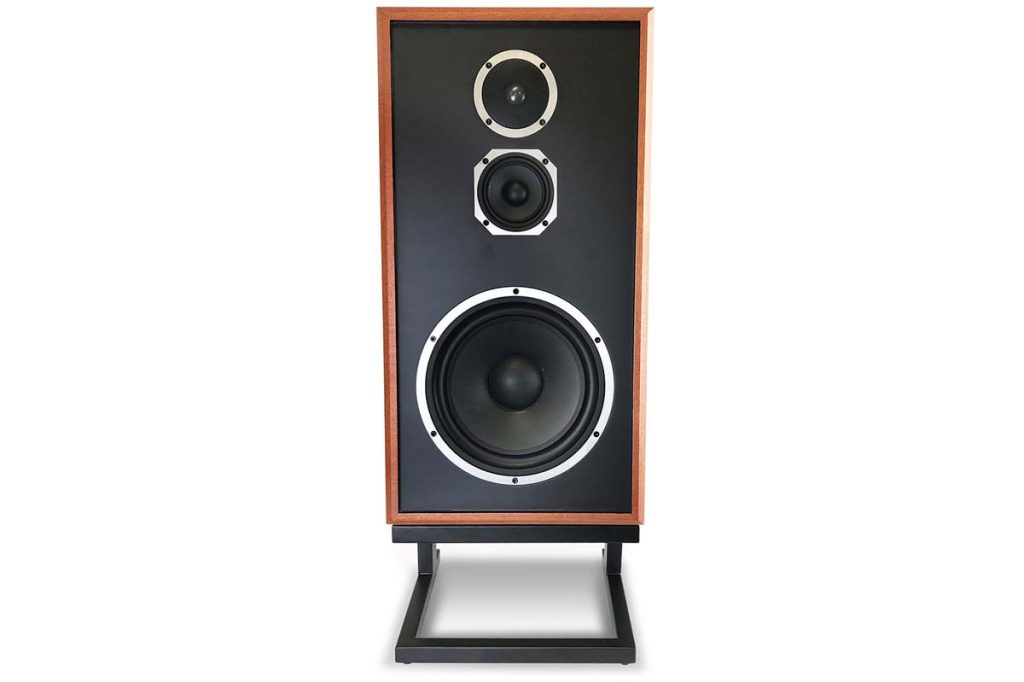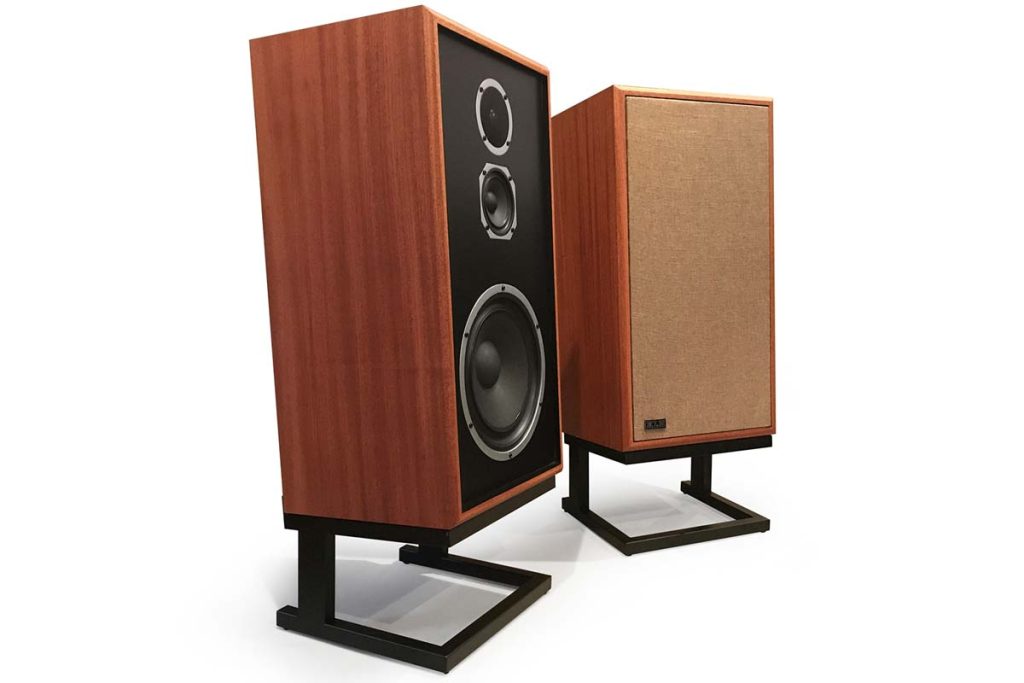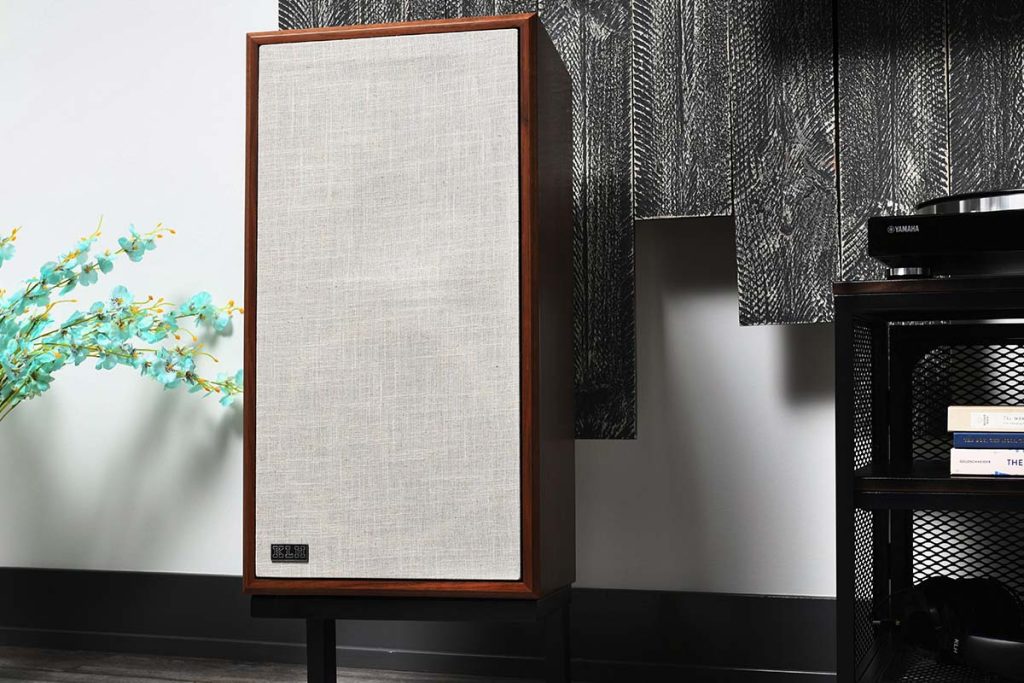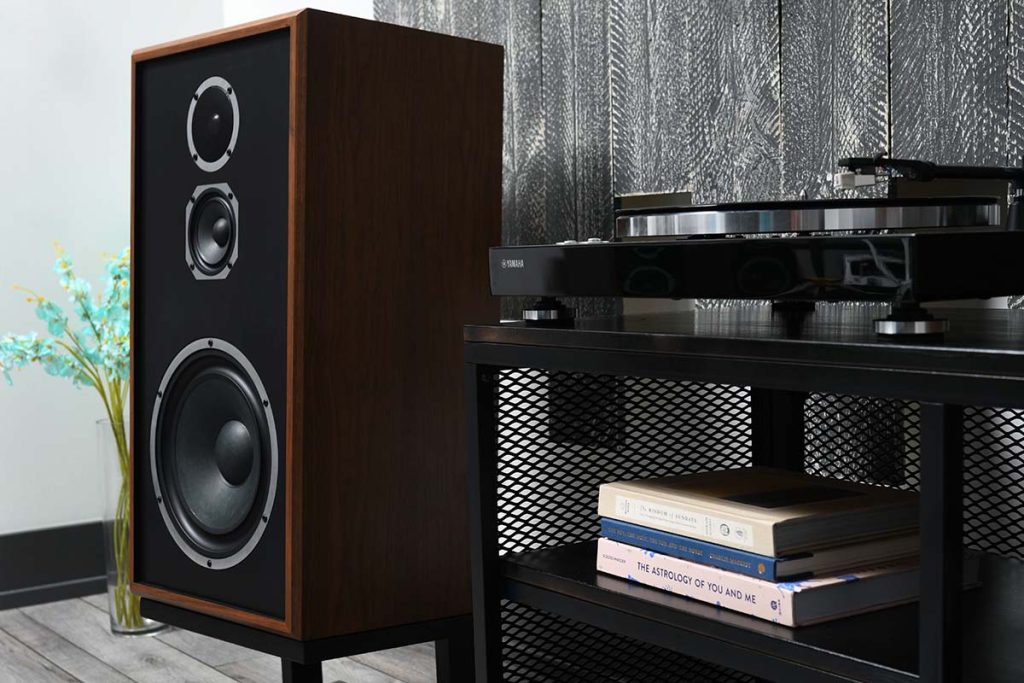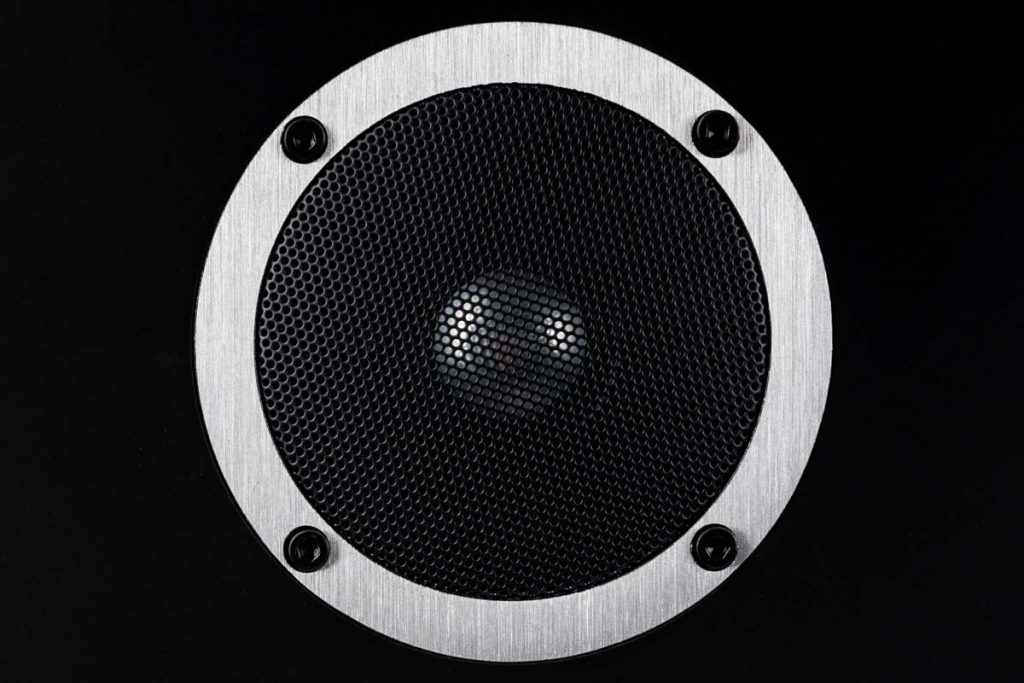Henry Kloss patented the principle of closed cabinet volume with softly suspended drivers at his first company, Acoustic Research – for the AR-1 loudspeaker. Then, when he founded KLH with Malcolm Low and Josef Hofmann in 1957, he began marketing this idea with his own loudspeaker designs. Our test candidate named “Model Five” saw the light of day in its first variant in 1968 and now – in its completely revamped 2021 rebirth – stands before me in the listening room.
Since 2017, KLH has been owned by David P. Kelley and his company Kelley Global Brands. Kelley was a leading light at Klipsch and Voxx for many years. With the change in ownership came a move from Massachusetts to Noblesville, Indiana. That’s where KLH’s developers and designers have been based ever since, with manufacturing of the present pair taking place in China. Unlike some rather nonchalantly made boxes in the USA, the build quality of the KLH Model Five is absolutely impeccable. This goes from the real wood veneer to the speaker terminals to the magnetic front grille and the stands included in the price. The design of the current Model Five is unmistakably based on the original and also uses the principle of the closed cabinet. The contained air volume, strictly defined for both the midrange and woofer, brings the very softly suspended membrane back to the starting position in a controlled manner after a positive deflection by the dynamic drive – Henry Kloss called this principle “Acoustic Suspension”. The sealed cabinet volume thus functions like a spring, keeping the two drivers under control without resonance and with low distortion. The goal here is to achieve the most linear and accurate reproduction of low frequencies in comparatively small enclosures. In fact, the bass drop below the lower cutoff frequency (at -3 dB) is less steep than with conventional bass reflex designs.
After a few hours of playback, music from France opens the test period with Model Five. Analog synthesizer arpeggios introduce the current album Carbon by musician JB Dunckel. He is known to most as one half of the formation Air. The music is fed in 24-bit/96-kHz resolution via Qobuz stream. The electronic bass on “Spark” reports upright, crisp and defined. The Model Five noticeably goes down into the frequency basement, even at low listening volumes. I’m struck by the three-dimensional spatiality of the reproduction. Everything is set up around a precise stereo center – especially when voices can present themselves there, which is the case in the track “Space”, for example. Chimes and pads surround the vocals, while the bass once again convinces with its naturalness. In fact, the term “holographic” already comes to mind at this early stage.
The crossover in the KLH Model Five divides the music signal into three sections and delivers them to the corresponding drivers developed in-house. These each have die-cast aluminum chassis that support the acoustic suspension principle. Aluminum is also the material for the single-inch tweeter, which is protected from external mechanical impact by a perforated plate. It is responsible for reproduction above 2.85 kilohertz, below which a four-inch paper cone works exclusively on midrange reproduction, complemented by a ten-inch woofer with a pulp-paper cone that operates below 380 hertz. The 2nd order crossover divides the bands respectively with a slope of 12 decibels/octave. According to KLH, the midrange driver should primarily take care of the frequency range primarily occupied by the human voice and is optimized for this.
I play the new album of the British formation Porcupine Tree. Most of the tracks on Closure/Continuation were created in sessions between drums and bass. The latter was played by singer and guitarist Steven Wilson himself. Together with drummer Gavin Harrison he ignites a real dynamic firework in the opening track “Harridan”. Fast bass tones, tricky rhythms and in the further course then also clearly “heavier” guitars push the Model Five with great naturalness in the listening room. Thanks to the open-sounding mix, I can hear every single element through the KLH, which tackle the intricate music with monitor-like precision. That’s the impression over my not-too-powerful Luxman tube. To see the whole “picture,” I now switch to the Graham Slee Proprius, solid-state mono power amps. The bass impulses come with even more pressure, the drums become even more plastic and move a bit further forward. At least this is my subjective impression. But what is identical to the reproduction via the tube amplifier: the holographic representation of the music and the exact stereo center. I note the ounce more control (and power) of the semi-conductor as an indication that while the two times 10 watts of the tube work well with the KLH and its 90.5 decibel efficiency (2.83 V/1 m), Graham Slee’s more powerful semi-conductors have a slight edge with me in terms of dynamics and pressure in this combination. The snare’s shell sounds more defined and the bass drum sets itself even more apart from the electric bass. These are nuances, but they are perceptible.
For owners of the Model Five, my recommendation here is: a good 20 (tube) watts should be enough for these speakers to tease out the last bit of dynamics and pressure. However, I can still listen to first-class music via a lower-powered tube.
The KLH Model Five’s holographic capabilities should also serve it well with classical music. I play Dvořák’s Seventh Symphony in D minor in a new recording by the Los Angeles Philharmonic under Gustavo Dudamel. Once again, the American loudspeaker development makes me feel deeply immersed in the orchestra’s soundstage. The wood in the Allegro maestoso really sounds like wood and contrasts beautifully in timbre with the strings. This is how a clarinet must sound! At the same time, the brass does not push the other instruments into the background, but simply adds its radiant energy to the overall sound. Again, with its balanced bass range, the Model Five manages to create a full sound character at my listening position even at low to moderate volumes. From my point of view, the result of the “Acoustic Suspension”. Through this, the current KLH developers have managed that the bass below the cutoff frequency of 42 Hertz just falls much flatter than it is the case with a classic bass reflex speaker.
A look at the speaker’s connection terminal reveals that there are also certain possibilities to influence the sound. With the help of a three-position rotary switch, the mids and trebles can be lowered by 1.5 and 3 decibels, respectively, from 400 hertz via a passive cow tail filter. This makes sense if your listening room has many reflective and hard surfaces. However, everyone has to try this out for themselves. Just make sure that the neutral position is found under “Hi”, and that is not the center position! The gentle lowering is audible in each case and helps to adapt to the room acoustics. I listen in my optimized listening room in the neutral position of the KLH. Behind the sound switch is technically a classic RC element with two different resistance values.
Holographic, detailed but not dissecting, and with balanced deep bass, the KLH Model Five is a great pleasure to listen to, especially considering the price tag for the craftsmanship and musical quality on offer. A cohesive performance – very much in the spirit of company founder Henry Kloss.
Accompanying Equipment
CD-Player/DAC: Luxman D-N150 | Phono preamp: Luxman E-250 | Turntable: Elac Miracord 70 with Audio-Technica AT33-PTG/II, Rega Planar 3 | Integrated amplifier: Luxman SQ-N150 | Power amplifier: Graham Slee Proprius Mono | Streamer: Volumio | Loudspeakers: Klipsch Heresy IV | Cables: Ecosse, TaraLabs, HMS, Furutech, Supra
Loudspeakers
KLH Model Five
Concept: sealed box three-way standmount loudspeaker featuring patented „acoustic suspension“ technology, selectable passive “cow tail” filter for room adjustment | Inputs: gold-plated single wire five-way binding posts | Driver complement: 10″-woofer (paper), 4″-midrange (paper), 1″-tweeter (aluminum) | Impedance: 6 Ω | Sensitivity (2,83 V/1 m): 90,5 dB | Frequency response (±3 dB): 42 Hz – 20 kHz | Dimensions (W/H/D): 35/87/33 cm (including stands) | Weight: 24 kg (including stands) | Warranty period: 10 years | Price per pair: around 3000 Euros
Bellevue Audio GmbH
Kessebürener Weg 6
59423 Unna
Telefon +49 2303 3050178
office@bellevueaudio.de


